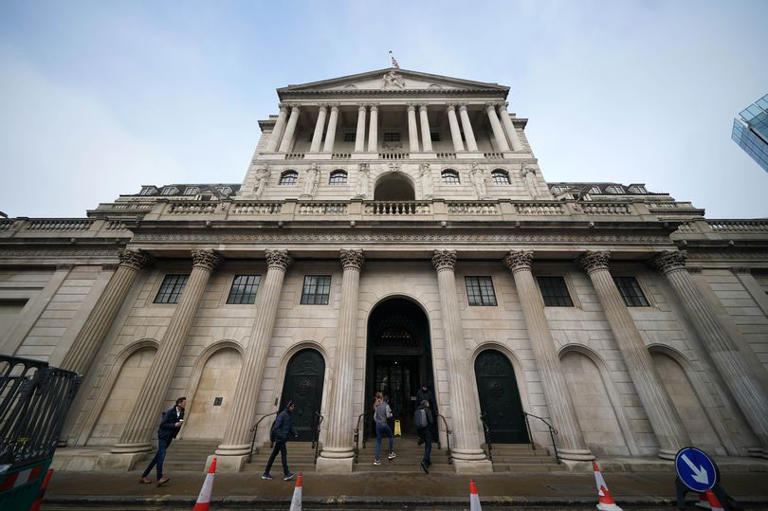Inflationary Factors: Explore the impacts of tariffs, supply-side shocks, and monetary policy decisions on inflation in this insightful blog post. Discover how these factors influence economic conditions and shape policy responses.

© Provided by The Telegraph
Inflationary Factors
Inflationary factors encompass various elements that contribute to changes in prices and economic conditions. This blog post delves into the complexities of inflation, examining the effects of tariffs, supply-side shocks, and monetary policy decisions.
Understanding Tariffs and Inflation
Tariffs, imposed on imported goods, can influence inflationary pressures within an economy. When firms face higher costs due to tariffs, they may pass these expenses on to consumers through increased prices. While tariffs themselves may not directly cause ongoing inflation, they can lead to short-term price hikes, impacting consumers’ purchasing power.
Examining Supply-Side Shocks
Supply-side shocks, such as geopolitical conflicts or disruptions in supply chains, can also contribute to inflation. Events like Russia’s invasion of Ukraine and the COVID-19 pandemic have disrupted global supply chains, leading to shortages and price fluctuations. While these shocks may cause temporary spikes in inflation, their long-term effects depend on how quickly supply chains can recover.
The Role of Monetary Policy
Monetary policy decisions, particularly those made by central banks like the Bank of England, play a crucial role in managing inflation. By adjusting interest rates and controlling the money supply, central banks aim to stabilize prices and support economic growth. However, the effectiveness of monetary policy in addressing inflationary pressures depends on various factors, including the broader economic environment and policymakers’ response to emerging challenges.
Critiquing Monetary Policy Responses
Critics often scrutinize central banks’ monetary policy responses to inflationary trends. The Monetary Policy Committee (MPC) of the Bank of England, for instance, has faced criticism for its handling of inflationary pressures. Some argue that the MPC has been slow to acknowledge the role of money supply growth in driving inflation, leading to delayed policy interventions.

Navigating Economic Challenges
The economic landscape is shaped by a complex interplay of factors, including tariffs, supply-side shocks, and monetary policy decisions. Policymakers must navigate these challenges carefully to maintain price stability and support sustainable economic growth. However, balancing these objectives requires a nuanced understanding of the underlying dynamics driving inflationary pressures.
Addressing Policy Implications
Addressing inflationary pressures requires a multifaceted approach that considers both short-term and long-term implications. While immediate policy interventions may help alleviate inflationary pressures, they must be complemented by measures to address underlying structural issues. Additionally, policymakers must remain vigilant in monitoring economic developments and adjusting policies accordingly to maintain price stability.
Conclusion: Navigating Inflationary Dynamics
Inflationary factors present complex challenges for policymakers and economists alike. By examining the impacts of tariffs, supply-side shocks, and monetary policy decisions, we gain valuable insights into the dynamics driving inflationary pressures. Moving forward, policymakers must adopt proactive measures to address these challenges while promoting sustainable economic growth.
ALSO READ:
“Andrew Bailey: 5 Shocking Ways to Revitalize the Economy Now!”




